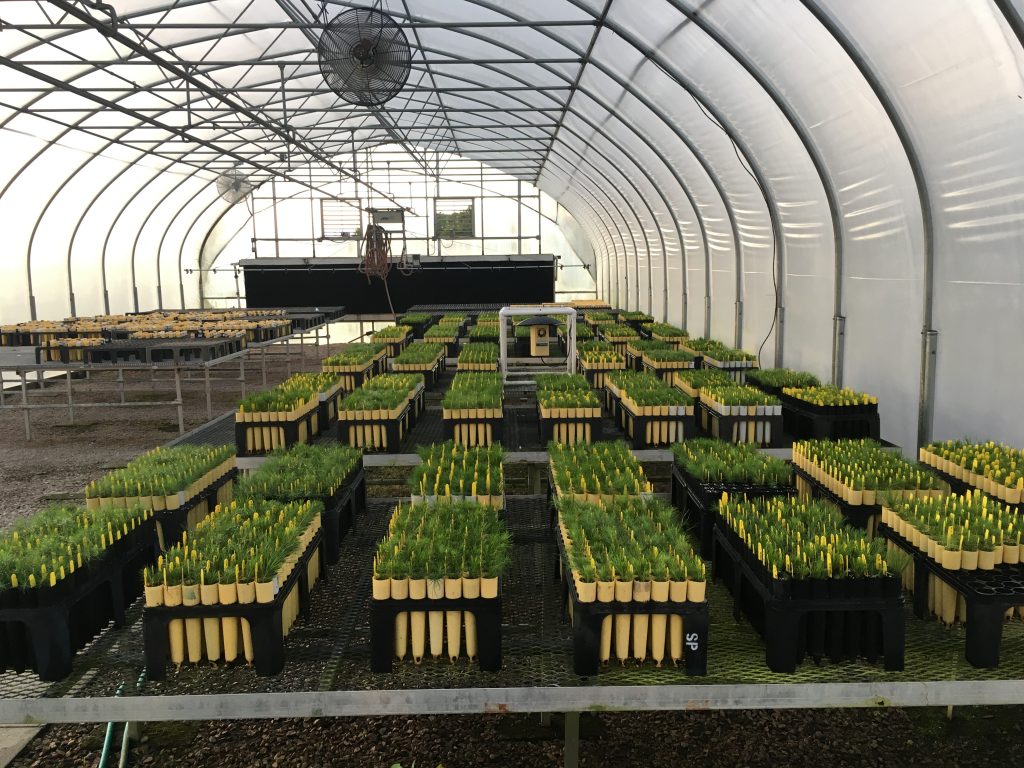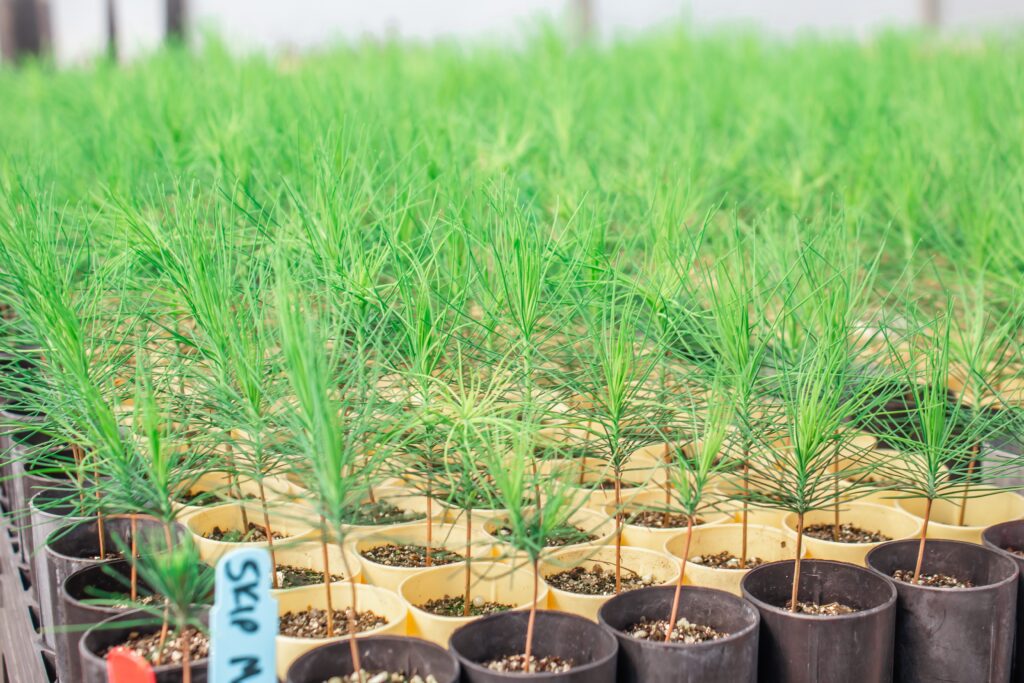Research

A second-generation cloned population of Pinus taeda was developed to validate genomic selection in Pinus taeda (Photo by Austin Heine).
Genomic Selection in Forest Trees: Beyond Proof of Concept
(2019-2024, USDA-NIFA Award #: 2019-67013-29169).
The selection of superior tree varieties requires time-consuming and expensive field trials. This process can take more than five years for Pinus taeda in the United States. The Cooperative Tree Improvement Program at NC State University developed a genomic selection plan. The plan has been implemented since 2020. We have genotyped over 4500 trees with the Pita50K SNP array for genomic selection research. We are genotyping 3000+ trees per year for the next four years to train the genomic selection model using 14000+ trees with known phenotypes. With support from USDA-NIFA, we genotyped about 2000 full-sib seedling progeny from two full-sib families to discover fusiform rust disease resistance genes. We developed the most advanced genetic map for the species and discovered three fusiform rust disease resistance genes in Pinus taeda. See our Heredity article for the details.

Population Genomics of Race Non-specific Disease Resistance in the Endemic Pinus-Cronartium Pathosystem
(2022-2026, NSF/USDA-NIFA Award #: (2022-04779).
Studying the population genetics of fusiform rust fungus Cronartium quercuum f. sp. fusiforme (Cqf) and identifying putative effector loci in the genome would significantly contribute to our knowledge about how qualitative gene-for-gene interactions can operate in genetically variable pine-rust pathosystem. As part of the experimental workflow, we will generate the most contiguous reference pangenome of Cqf, published using long-read PacBio sequencing of four haploid fungal isolates. It will provide a whole-genome, linear sequence space to perform sliding-window scans for selective sweeps. Additionally, it can be used in comparative genomic studies with other rusts in the Cronartium genus to identify regions that may have undergone gene loss or diversification in response to adaptation to different hosts. Finally, since the Cqf genome is small (<100Mbp), identification of pathogen avirulence genes could be much easier than the identification of the causal resistance genes in the Pinus taeda genome (>20Gbp). Once avirulence genes are identified and cloned, they could facilitate the eventual identification and cloning of the host resistance genes responsible for non-race-specific resistance.
Conifer SNP Consortium (CSC)
I established the Conifer SNP Consortium in January 2018 during the Plant Animal Genome Conference to bring the forest genetics/tree breeding community together to develop genotyping platforms. The consortium signed a memorandum of understanding with Thermo Fisher Scientific to use the Axiom technology to develop SNP arrays. So far 16 arrays have been designed for different organizations and species. A few example are given below.
CSC-Pita50K (Pinus taeda) – Lead PI: Fikret Isik, USA
CSC-Pira50K (Pinus radiata) – Lead PI: Natalie Graham, New Zealand
CSC-Piab50K (Picea abies) – Lead PI: Harry Wu, Sweden
CSC-Pitro50K (tropical pines) – Lead PI: Zander Myburg, S. Africa /Juan Acosta, USA
CSC-4TREE (EU-B4EST, Pinus pinea, Pinus pinaster, Fraxinus (excelsior and angustifolia) and Populus (nigra and deltoides) – Lead PIs: Leopoldo Sanchez-Rodriguez and Patricia Faivre-Rampant (INRAe, France)
CSC-Psme50K (Pseudotsuga menziesii) – Lead PI: Glen Howe, USA
Optimal Mating Design of Monoecious Species
Khushi Goda, a Ph.D. student with the Cooperative Tree Improvement Program, developed an algorithm for mating designs for conifers. Conifers are monoecious species (have female and male strobili). They cannot tolerate inbreeding because of genetic load (deleterious alleles in their genome). The software Khushi developed for her Ph.D. manages the inbreeding while increasing the genetic gain in mating designs. Here is a short video of her research.
Click here to run the software (shiny app by Khushi Goda).